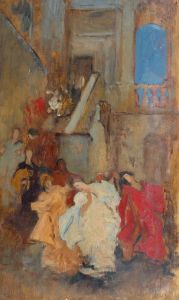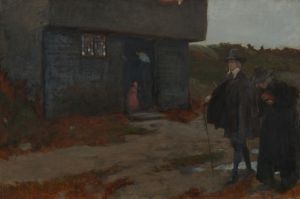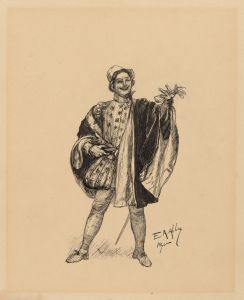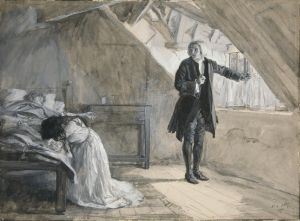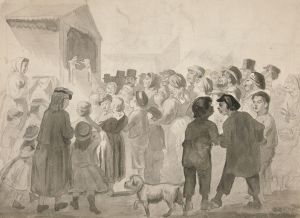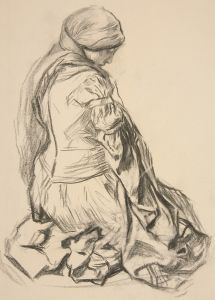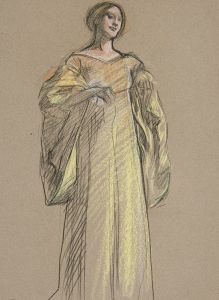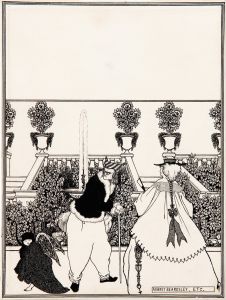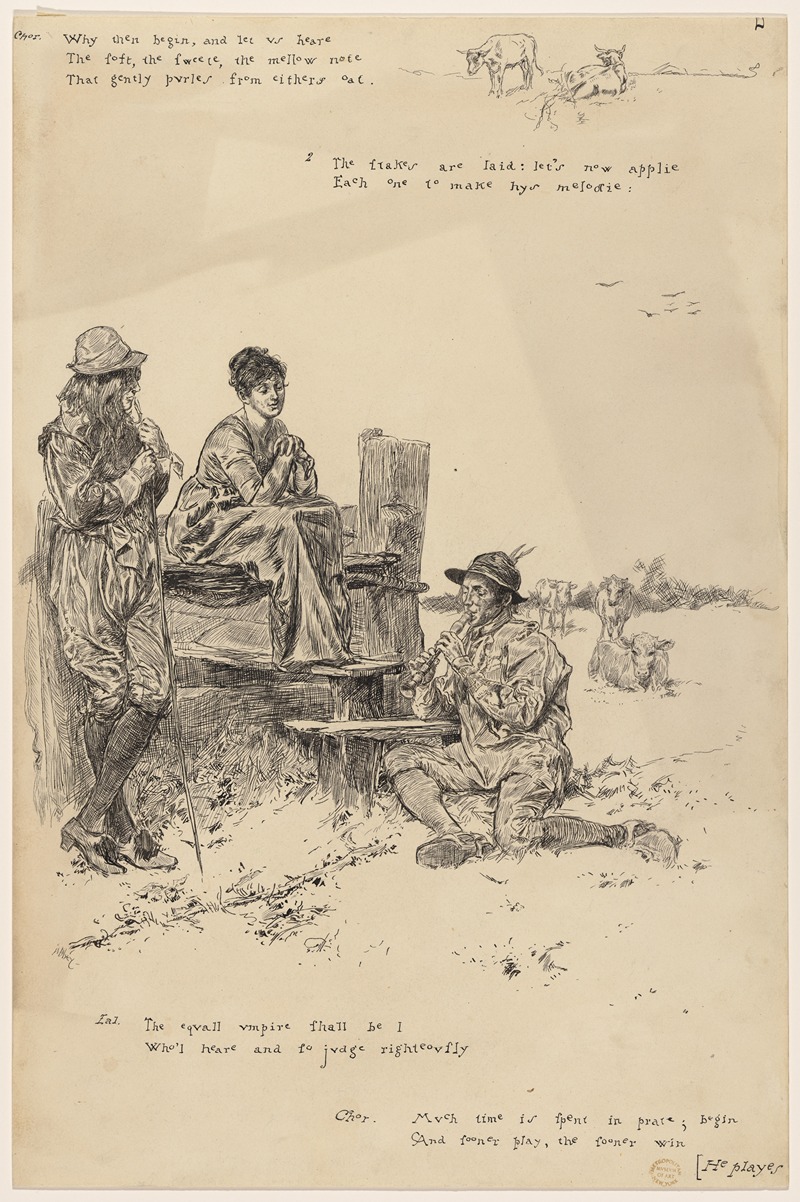
‘Why then begin…’ illustration to ‘A Bucolick or Discourse of Neatherds’
A hand-painted replica of Edwin Austin Abbey’s masterpiece ‘Why then begin…’ illustration to ‘A Bucolick or Discourse of Neatherds’, meticulously crafted by professional artists to capture the true essence of the original. Each piece is created with museum-quality canvas and rare mineral pigments, carefully painted by experienced artists with delicate brushstrokes and rich, layered colors to perfectly recreate the texture of the original artwork. Unlike machine-printed reproductions, this hand-painted version brings the painting to life, infused with the artist’s emotions and skill in every stroke. Whether for personal collection or home decoration, it instantly elevates the artistic atmosphere of any space.
Edwin Austin Abbey (1852–1911) was an American artist and illustrator known for his detailed and historically inspired works, often drawing from literature and drama. One of his notable illustrations, titled "Why then begin...", was created for A Bucolick or Discourse of Neatherds, a literary work. This illustration reflects Abbey's characteristic style, which combines meticulous attention to detail with a strong sense of narrative and atmosphere.
Abbey was particularly renowned for his ability to bring literary and historical themes to life through his art. His work often accompanied the writings of prominent authors, and he was a frequent contributor to illustrated editions of classic literature. The illustration "Why then begin..." is an example of his skill in interpreting text visually, capturing the mood and essence of the source material. The title of the illustration suggests a connection to a specific passage or theme within A Bucolick or Discourse of Neatherds, though further details about the exact context of the artwork are not readily available.
Abbey's artistic career was marked by his success in both the United States and Europe. He spent much of his professional life in England, where he became associated with the Pre-Raphaelite movement and developed a reputation for his historical and literary illustrations. His works often featured themes of pastoral life, romance, and chivalry, which were popular during the late 19th and early 20th centuries.
The medium of the illustration "Why then begin..." is consistent with Abbey's typical approach, which often involved pen-and-ink drawings or watercolor paintings. These techniques allowed him to achieve a high level of detail and texture, enhancing the storytelling quality of his illustrations. Abbey's works were widely admired for their technical precision and emotional depth, and they continue to be studied as examples of late Victorian and Edwardian illustration.
While specific details about the creation and reception of "Why then begin..." are limited, the illustration is representative of Abbey's broader artistic contributions. His ability to translate literary themes into compelling visual narratives has secured his place as one of the most respected illustrators of his time.





